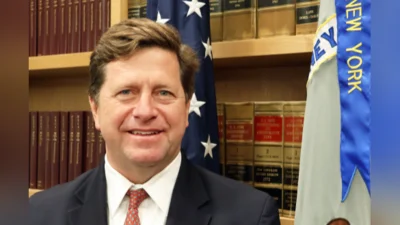The Congressional Record is a unique source of public documentation. It started in 1873, documenting nearly all the major and minor policies being discussed and debated.
“INTRODUCTION OF LEGISLATION TO CREATE A COOPERATIVE RESEARCH PROGRAM FOR HAZARDOUS MATERIALS TRANSPORTATION” mentioning the U.S. Dept. of Transportation was published in the House of Representatives section on pages H768-H769 on Feb. 17, 2005.
The publication is reproduced in full below:
INTRODUCTION OF LEGISLATION TO CREATE A COOPERATIVE RESEARCH PROGRAM
FOR HAZARDOUS MATERIALS TRANSPORTATION
The SPEAKER pro tempore. Under a previous order of the House, the gentleman from Maryland (Mr. Cummings) is recognized for 5 minutes.
Mr. CUMMINGS. Mr. Speaker, today I am introducing legislation to establish a Cooperative Research Program for Hazardous Materials Transportation.
This program will enable experts from the multiple Federal agencies responsible for regulating and enforcing the hazardous waste materials industry to join with the private sector and State and local governments to research cross-cutting issues in the transportation of hazardous materials that are not adequately addressed by existing mode-
specific research programs.
Hazardous materials move through thousands of local communities across the United States every day, usually without the knowledge of residents or even of local officials. During the past decade, the United States Department of Transportation has recorded between 14,000 and 18,000 unintentional releases of hazardous materials during transportation on an annual basis. Between 1994 and 2003, these incidents resulted in 210 fatalities and more than 3,400 injuries.
Recent incidents involving the release of hazardous waste being transported by trains, including a 2001 incident in my district in Baltimore that resulted in a massive fire, as well as incidents in South Carolina, Texas and South Dakota that resulted in fatalities, have dramatically reminded us of the danger that these shipments can pose to our communities.
It is, therefore, imperative that we take every concrete step available to us to improve the safety and security of hazardous materials transportation, and the bill I introduce today takes a joint step towards enabling us to improve all facets of hazardous materials transportation.
{time} 1415
Currently more than a dozen Federal agencies have regulatory, enforcement and operational responsibilities over the estimated 1 million hazardous materials shipments that are made on a daily basis in the United States.
These Federal agencies share responsibilities with literally thousands of State and local agencies and private sector actors, for anticipating and responding to the varied risks, including safety, security, human health and environmental risks associated with the transportation of hazardous materials.
A report just issued by the Transportation Research Board has found that perhaps the most notable gap in America's system of ensuring hazardous material safety and security is in the conduct of research that is cross-cutting and/or multimodal in application.
This is a wake-up call urging us to begin to address the transport of hazardous materials from a comprehensive multimodal perspective rather than from the isolated perspective of a single mode program or material type.
Modeling the successful cooperative research programs that already exist to study transit and highway transportation, my bill will create a cooperative research program that will bring together representatives of 10 Federal agencies, private sector hazardous material shippers and carriers, and State and local governments to study cross-cutting topics in hazardous materials transportation.
Priority will be given in the selection of research projects to topics that yield results immediately applicable to risk analysis and mitigation and/or that will strengthen the ability of first responders to respond to incidents and accidents involving hazardous materials, among other topics.
My bill mandates that the research program conduct studies that will inform the routing of hazardous shipments and the development of regulations regarding mandatory routing decisions, the formulation of appropriate packaging requirements for those hazardous materials that are most frequently involved in release incidents, the development of reasonable models of State and local risk response and management plans that effectively address both safety and security considerations, and the definition of the roles and responsibilities of carriers and shippers in the hazardous materials events response and even event response procedures that can be consistently applied across all transportation modes.
Without the ability to adequately research and respond to issues in hazardous materials transportation that are multimodal in scope and national in application, our ability to make informed legislative, regulatory, and operational decisions regarding hazardous materials transportation is unacceptably limited.
Therefore, I urge you to join me in supporting the formulation of a cooperative research program for hazardous materials transportation by cosponsoring this important legislation.
____________________








